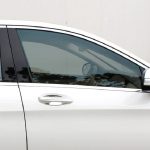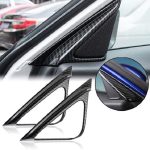When unexpected damage leaves you with a shattered or cracked car window, one of the first questions that comes to mind is: How much will it cost to replace? Car window replacement costs can vary greatly depending on factors such as the type of window, the vehicle model, and whether you choose an aftermarket or OEM (Original Equipment Manufacturer) replacement. In this guide, we’ll break down what influences the cost of replacing a car window, average pricing, and ways to make the process as affordable as possible.
Why Car Window Replacement Costs Vary
When you’re looking at the cost of replacing a car window, several factors come into play. Understanding these will help you get a better idea of why prices can fluctuate and help you budget accordingly.
1. Type of Window
Different windows on your car have different functions and thus come at different prices:

- Front Windshield: The front windshield is usually the most expensive to replace due to its size and safety requirements. It is often reinforced with safety layers and special treatments to withstand impact, making it costlier.
- Side Windows: Side windows are typically more affordable, but prices can vary depending on whether it’s a passenger or driver window.
- Rear Window: Rear windows can be moderately expensive, as many have heating elements embedded to prevent frost. This added feature may increase the replacement cost.
2. Vehicle Make and Model
Your car’s make and model heavily influence the replacement cost. Luxury or high-end vehicles often require specialized glass, which can make the process more expensive. Additionally, newer models or imported cars may have higher costs due to less readily available parts.
3. OEM vs. Aftermarket Glass
Choosing OEM or aftermarket glass for replacement can impact the cost significantly:
- OEM Glass: Original Equipment Manufacturer (OEM) glass is produced by the same manufacturer as the original glass in your car. While it ensures a perfect match, it often comes at a higher price.
- Aftermarket Glass: Aftermarket glass is a third-party product designed to fit your car’s specifications. It’s generally cheaper but might vary slightly in quality and fit.
4. Labor Costs
Labor costs vary depending on location, the complexity of the installation, and whether additional repairs are necessary. Reputable service providers may charge higher fees for skilled labor, but the quality and expertise can be worth the investment.
5. Insurance Coverage
In some cases, your insurance may cover part or all of the replacement cost. Comprehensive coverage often includes glass replacement. However, depending on your deductible and policy, you may still pay out-of-pocket.
Average Cost to Replace a Car Window by Type
Understanding average costs can help you budget for the replacement. Here’s a breakdown of typical replacement prices by window type.
Front Windshield Replacement Cost
Replacing a front windshield typically costs between $200 and $500. For high-end models or vehicles with advanced technology features (like HUD or automatic wipers), the cost can go as high as $1,000. These prices cover standard windshields without complex add-ons.
Side Window Replacement Cost
Replacing a side window usually ranges from $150 to $400. The price varies based on the car’s model, with passenger cars generally at the lower end and luxury cars at the higher end.
Rear Window Replacement Cost
Rear window replacement costs are typically between $200 and $600, given the additional heating elements in many rear windows. SUVs and larger vehicles often have higher replacement costs due to the larger surface area.
Signs You Need a Car Window Replacement
How much to replace car window? A damaged window doesn’t always mean it needs to be replaced, but here are some clear indicators that a full replacement is necessary:

1. Cracks or Chips
Small chips can often be repaired, but larger cracks compromise the structural integrity of the glass. If a crack obstructs your view or exceeds a certain length, a replacement is usually the best choice.
2. Damaged Tint or Defroster Lines
Rear windows often have embedded defroster lines, and if these are damaged, replacing the window may be more cost-effective than attempting repairs.
3. Frequent Fogging
Poor-quality glass can allow moisture inside, leading to frequent fogging. Replacement may prevent this recurring issue.
Steps to Take When You Need a Car Window Replacement
If your car window needs replacing, here are some recommended steps to ensure a smooth, affordable process:
1. Contact Your Insurance Provider
First, check with your insurance provider to see if they cover window replacement. Comprehensive coverage often includes glass repair or replacement, though you may still need to meet a deductible.
2. Get Multiple Quotes
Getting quotes from several auto glass specialists can help you compare prices and find the best option. Make sure quotes include both parts and labor.
3. Choose a Reputable Auto Glass Service
Opt for a reliable service provider with certified technicians, especially if choosing aftermarket glass. Trusted providers can help avoid future issues, such as poor sealing or alignment.
Ways to Save on Car Window Replacement
If the replacement cost seems daunting, here are some ways to make it more affordable without compromising quality.
1. Check for Discounts
Many auto glass companies offer discounts, especially for new customers. Inquire about seasonal deals, promotional discounts, or membership perks.
2. Use Aftermarket Glass
If budget is a primary concern, aftermarket glass can be a cost-effective alternative to OEM glass. While quality might vary slightly, it’s generally safe for most vehicles.
3. Consider Mobile Glass Services
Mobile glass services come to you and may offer lower prices. This option can save you both time and transportation costs, as many of these services are designed to keep costs competitive.
Pros and Cons of OEM vs. Aftermarket Glass
Both OEM and aftermarket glass have their pros and cons, and the right choice depends on your budget and quality preference.
OEM Glass:
- Pros: Guaranteed fit, high quality, matches original specs.
- Cons: Higher price, longer wait times for rare parts.
Aftermarket Glass:
- Pros: Lower price, readily available.
- Cons: Slight variations in fit, possible quality differences.
How to Prevent Future Car Window Damage
Preventing damage to your car windows can help you avoid costly replacements. Here are some tips to keep your windows in top shape:

1. Park Smartly
Parking in shaded areas, under covered parking, or away from large trees can help avoid common damage sources like hail, branches, and extreme sun exposure.
2. Avoid Slamming Doors
Slamming car doors can create micro-fractures over time, especially if there’s a pre-existing chip or crack. Close doors gently to prolong the life of your glass.
3. Use Quality Wipers and Clean Regularly
Dirty or worn wiper blades can scratch your windshield over time. Regularly clean your windows and replace wiper blades as needed to prevent scratches.
Key Takeaways for Car Window Replacement Costs
Car window replacement can vary significantly based on the type of window, vehicle make, and glass quality. By understanding the factors involved, you can make informed decisions and potentially save on costs. Here are some final takeaways:
- Costs Depend on Window Type: Windshields are typically the most expensive, followed by rear windows, with side windows usually costing less.
- Labor and Glass Quality Impact Pricing: OEM glass tends to be more expensive than aftermarket, though both can offer reliability when professionally installed.
- Insurance May Cover Glass Replacement: Check with your insurance provider for potential coverage, especially if you have comprehensive insurance.
- Preventative Maintenance Helps: Taking steps to avoid damage, like parking carefully and avoiding door slams, can save you from needing replacements in the first place.
For anyone needing a window replacement, taking these steps will help you make the best choice for your vehicle and budget. Ensuring quality installation and considering all your options—from discounts to glass type—can bring down the cost and get you back on the road safely.
Final Thoughts on Car Window Replacement Costs
When you need to replace a car window, understanding the factors that affect cost can help you make informed decisions and avoid unnecessary expenses. From the type of glass to labor costs and insurance, knowing your options allows you to plan effectively.


